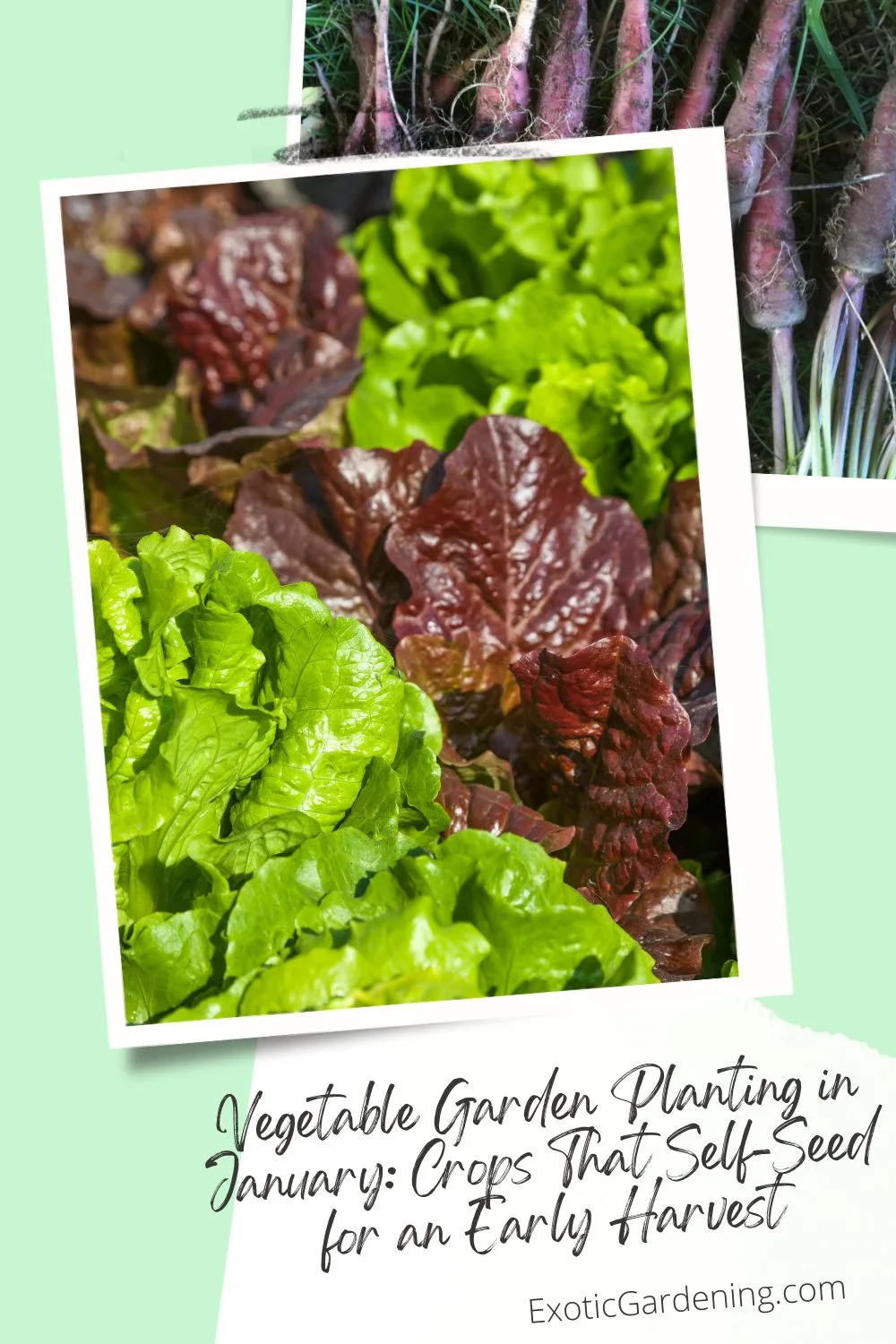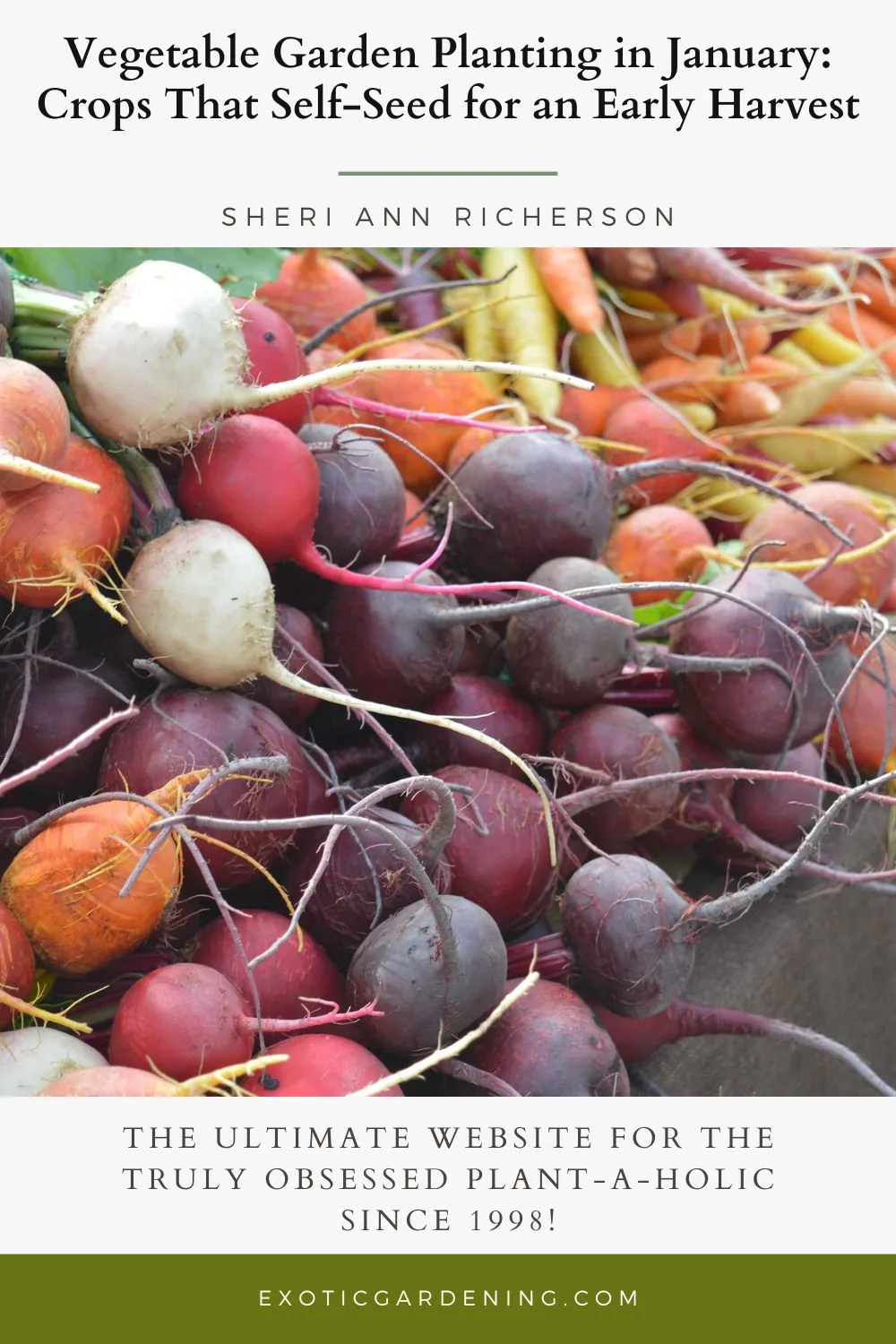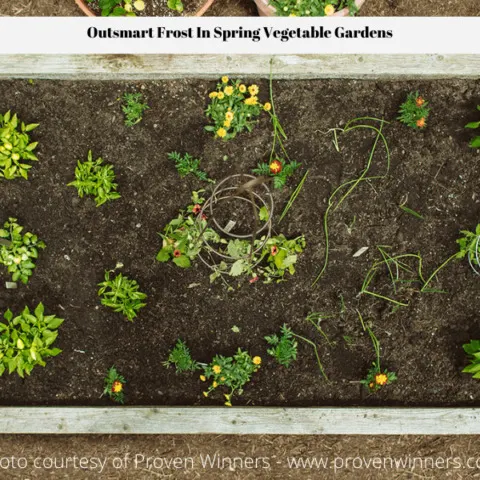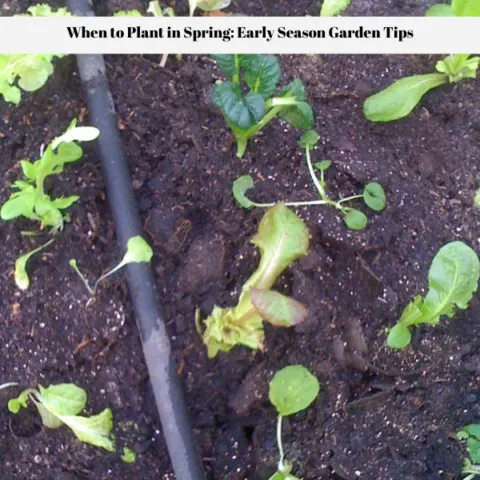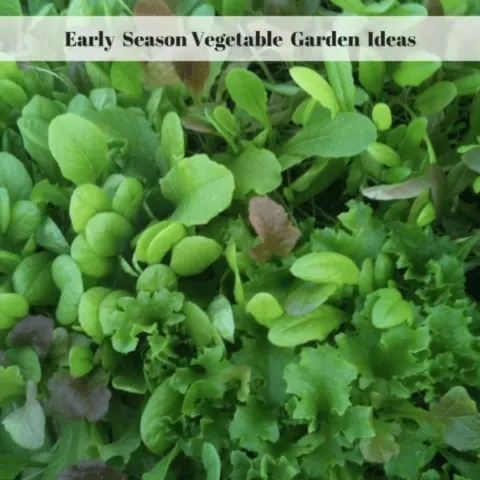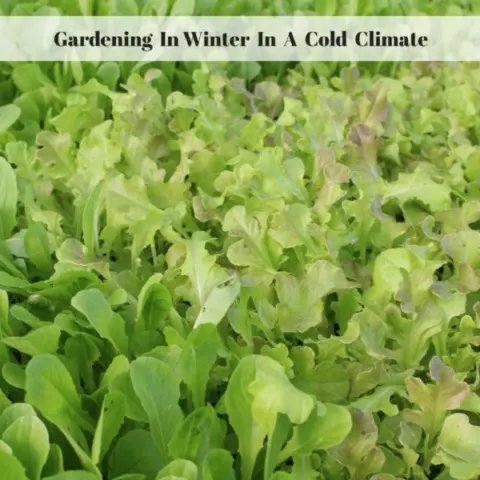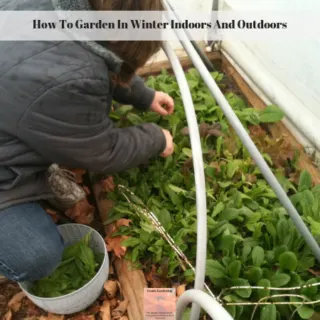Vegetable garden planting doesn’t have to wait until spring.
One of my favorite tricks for getting a head start on the growing season is to plant in January.
Yes, you read that right.
While most gardeners are curled up inside dreaming over seed catalogs, I’m outside in the snow, tucking seeds into the ground.
Now, before you shake your head and think I’ve lost it, let me explain.
There are a surprising number of crops that naturally reseed themselves year after year if you allow them to go to seed.
These self-seeding vegetables are tough, cold-hardy, and eager to get growing as soon as conditions are right.
Even though I didn’t allow anything to self-seed last year, I decided to take matters into my own hands by planting some of these crops in January.
The snow acts like a cozy blanket, and when it melts, the seeds make perfect contact with the soil.
By the time spring rolls around, they’ll be ready to germinate.
The result?
A salad garden weeks ahead of schedule.
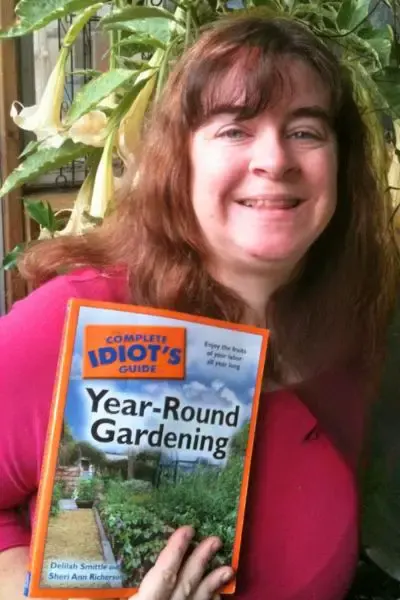
Grow Food in Every Season
Love the idea of vegetable garden planting in January? Go deeper with strategies, schedules, and protective methods from my book,
The Complete Idiot’s Guide to Year-Round Gardening. Learn how to plan for all four seasons, protect crops from weather swings, and keep harvests coming.
- Four-season bed layouts & timing
- Cold-frame, row cover, & tunnel basics
- Successions for greens, roots, & herbs
Why Plant in January?
Indiana winters are snowy and cold, but that doesn’t mean the garden has to sit idle.
Cold-hardy seeds don’t mind waiting in the soil.
They simply rest until conditions improve - longer days, warmer soil, and melting snow - before sprouting.
This approach mimics nature.
In the wild, plants drop their seeds in the fall.
Those seeds remain dormant all winter, then germinate naturally in spring.
By scattering seeds in January, I’m simply copying what nature already does - just in a tidier garden bed.
Crops That Self-Seed (And Thrive in January Planting)
Here’s a closer look at the crops I planted on that snowy January day.
These vegetables either reseed themselves naturally or do very well with early sowing.
1. Blue & Yellow Blend Edible Pod Peas – The Cook’s Garden
These peas are showstoppers with pods in shades of blue, purple, and yellow. They love to climb, so I use tomato cages for support. Since they’re edible pod peas, you can enjoy them whole—pods and all.
2. Monstrueux de Viroflay Spinach – Bountiful Gardens
This heirloom, also known as “monster spinach,” produces huge, tender leaves. Spinach thrives in cool weather, so sowing it early ensures lush, sweet leaves before the summer heat makes it bolt.
3. Paris Market Carrots – Territorial Seed Company
These small, round carrots look like orange marbles and are perfect for shallow soil or container growing. Planting them in January allows them to settle in and be ready to sprout as soon as the soil warms.
4. Pan-Pacific Greens Stir-Fry Mix – Renee’s Garden
A handy mix filled with hearty greens that can be eaten raw or cooked quickly in stir-fries. I love mixes like this because you get variety without buying a dozen seed packets. Plus, they tolerate unpredictable spring weather.
5. Easter Egg II Rainbow Radishes – Renee’s Garden
Radishes are quick, colorful, and rewarding. This blend produces purple, pink, white, and red roots. Cool weather keeps them crisp and mild, so early planting is ideal.
6. European Reds & Greens Summer Lettuce Bouquet – Renee’s Garden
Lettuce often bolts in hot weather, but planting early means tender, flavorful leaves. This mix combines red and green lettuces for salads that look as good as they taste.
7. Gala Mâche – Renee’s Garden
Also called corn salad or lamb’s lettuce, mâche is a delicate green with a mild, nutty flavor. It thrives in cool weather and adds something special to early spring salads.
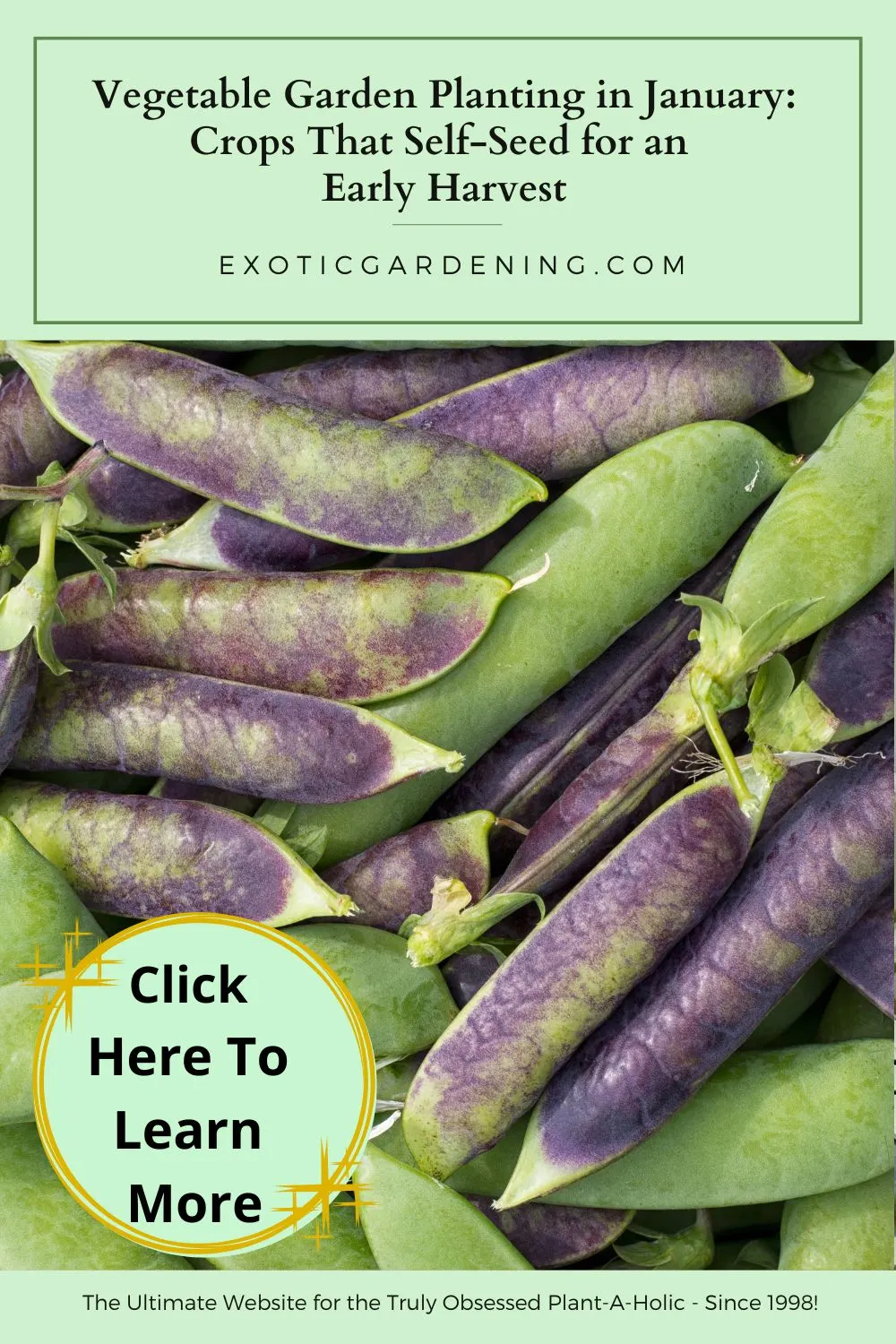
How to Plant Seeds in January
The process is simple and low-maintenance:
-
Choose cold-tolerant crops. Stick with greens, peas, carrots, and radishes.
-
Scatter seeds directly onto the soil. Clear a space if needed, but don’t worry if snow covers the bed.
-
Let nature handle the rest. Melting snow presses the seeds into the soil and provides the moisture they need. When the temperature is right, they sprout on their own.
It’s essentially nature’s form of winter sowing - just without the plastic containers.
Benefits of Planting Self-Seeding Crops
There are plenty of reasons to love this method:
-
Earlier harvests. Enjoy fresh greens weeks before your neighbors.
-
Less fuss. No indoor seed starting or transplanting required.
-
Stronger plants. Seeds that germinate on their own schedule tend to be more resilient.
-
Extended harvest window. Planting in January stretches your growing season and boosts your overall yield.
Why This Works for Me (And Can for You Too)
Every time I stand outside in January scattering seeds across the snow, I get excited knowing that spring salads aren’t far away.
Planting in January may feel unconventional, but it’s one of the simplest ways to work with nature’s rhythm.
Instead of waiting for warm weather, I let these hardy crops do what they’ve always done - wait patiently for spring and then burst to life.
If you’re itching to garden while winter still has its grip, give this a try.
You may be pleasantly surprised to see how well these self-seeding crops reward your patience.
When the snow melts, you’ll be greeted with a ready-made salad garden weeks ahead of schedule.
Have you ever tried vegetable garden planting in January or allowed crops to reseed themselves?
I’d love to hear about your experience - share your story in the comments!
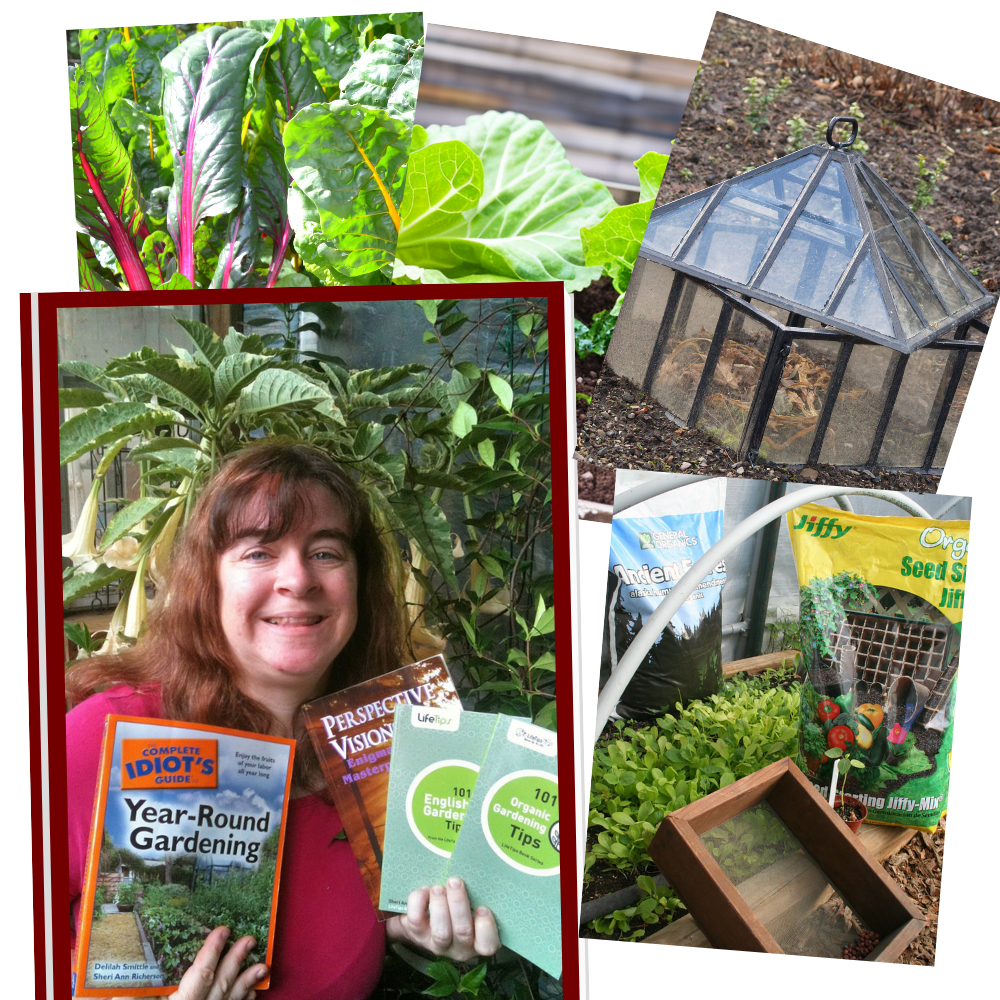
Quick Tips For Year-Round Gardening (Mini Course)
Short, practical lessons to help you garden outdoors all year—even in a cold climate. Perfect if you want results fast without a long course.
- Use covers & simple structures for four-season growing
- Protect cool-weather and heat-loving crops by season
- Keep overwintered plants producing fresh food all winter
Note: This is a mini course - brief by design - so you can implement the essentials quickly and start harvesting sooner.
FAQ: January Planting & Self-Seeding Crops
Q: What vegetables can you plant in January?
A: Cold-hardy crops such as peas, spinach, lettuce, carrots, radishes, and mâche thrive when planted directly into the soil in January.
Q: Can seeds survive freezing temperatures?
A: Yes. Cold-tolerant seeds don’t sprout until conditions are right. They simply rest in the soil until the warmth and daylight signal them to grow.
Q: Do I need to cover the seeds with soil or mulch?
A: Not necessarily. The snow will naturally press seeds into the soil as it melts. If you want extra protection, you can sprinkle a thin layer of compost over them.
Q: Will planting in snow really work?
A: Absolutely. Snow acts as an insulating blanket. As it melts, it provides moisture and helps pull seeds into contact with the soil.
Q: Which crops are not good for January planting?
A: Heat-loving vegetables like tomatoes, peppers, and beans will not survive cold soil. Save those for later in spring when temperatures warm up.
Q: Is January planting the same as winter sowing?
A: They’re similar, but not exactly the same. Winter sowing often uses containers outdoors. January planting skips the container and relies on the natural cycle of snow and soil.
Q: How early will I be able to harvest?
A: Usually 2–3 weeks earlier than traditional spring planting, depending on your local climate and the crops you choose.
Q: Do I need special seed varieties for success?
A: Choose heirlooms and varieties labeled as “cold-hardy,” “early,” or “overwintering.” These are naturally more resilient.
The Backside Of The Gardening Calendar
Use Frost To Your Advantage
Did you know that there is a way to use frost to your advantage in the garden in both spring and fall? Read on to learn more.
Outsmart Frost in Spring Vegetable Gardens
Understanding how to outsmart frost in spring vegetable gardens leads to earlier harvests, less plant damage and a longer growing season.
When to Plant in Spring: Early Season Garden Tips
Know when to plant in spring by using these early garden season tips. These tips will allow you to get a head start on your vegetable garden.
Jump Start The Spring Garden With Winter Sown Vegetables
Get a jump start on the spring garden with winter sown vegetables. Once you know how to do this, its easy to grow vegetables year round.
Vegetable Garden Frost Protection: Extending Your Winter Gardening Season
Discover essential tips and techniques for vegetable garden frost protection. Extend your winter gardening season with our guide.
Gardening In Cold Climates In Early January
Gardening in cold climates in January without supplemental heat is possible. The seeds, plants and garden structure is what matters.
Vegetables to Plant in January: Garden Tips for Year-Round Growing
There are a number of vegetables to plant in January as well as some flowering plants. Indoors or out, find out dates to start in Indiana.
The Best Vegetables To Plant In February
There are a number of cool season vegetables to plant in February directly in the garden even if you live in a cold climate.
Embracing The Beauty of Winter: A Guide To Winter Flowering Plants
Elevate your garden with winter flowering plants. Explore cold-hardy varieties, garden prep, and nurturing tips.
How To Garden In Winter Indoors And Outdoors
Learn how to garden in winter indoors and outdoors. There are many vegetables and herbs that don't mind the cold or thrive in containers.
Save Money! Harvest Free Vegetables Year-Round In Any Climate!
Yes, you can harvest vegetables year-round, even if you live in a cold climate by planting at the right time and gardening under cover.
September Is Here But Don't Quit Gardening Now!
September is here but there is no need to quit gardening. Plant those cool weather crops from seed or transfer plants into the garden.
Monkshood Flowers For The Fall
There are some late blooming flowers for the fall season such as monkshood. Autumn monkshood is known to bloom from September to November!

